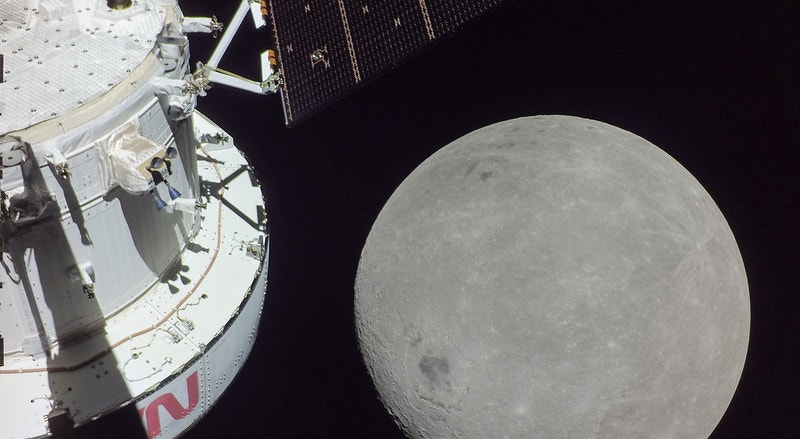On the sixth day of the Artemis I mission, the Orion space probe successfully reaches the target for which it was designed: the moon.
A relatively uneventful trip, according to Artemis 1 mission manager Mike Sarafin, although some anomalies have emerged.
According to Mike Sarafin most of the anomalies found, have arisen in the stellar navigation system, with the Software of Orion “mixing” with the glow emitted by the thrusters during course correction burns.
“The propellants were picked up by the star tracker because they were projected onto the field of view of the reading system,” he says. “Light was hitting the sensor,” confusing the Software.
This issue will certainly continue to occur “periodically” during the rest of the mission, but the team is now aware of the issue and ready to address it. Otherwise, the problem never violated flight rules, according to Artemis I flight director Jeff Radigan.
First critical maneuver performed successfully
The prototype of NASA’s future Orion manned space capsule on Monday performed the first of two critical maneuvers at 9 p.m. that will send the spacecraft into a distant retrograde orbit around the moon. A key stage in the overall mission of the Artemis 1 mission.
The maneuver was performed during a period when the spacecraft was hidden from Earth by the moon, making it impossible for flight controllers to know for 34 minutes whether the maneuver was proceeding as planned.
The Orion module thrusters were fired for two and a half minutes to put the spacecraft on a programmed trajectory to establish a retrograde elliptical orbit with respect to the moon’s motion.
“This is an absolutely critical maneuver. It’s something that Orion needs to do,” said Jim Geffre, Orion’s Service Module Integration System Manager, during a meeting on November 18th. Combustion can be done by the main engine or by different auxiliary thrusters if there is a problem with the main engine.
It was also in this maneuver that the Orion probe reached the minimum distance from the lunar surface (130 km), also exploiting the gravitational influence of the natural terrestrial satellite.
With this manoeuvre, the ship’s speed increased from 3,420 km/h before the fire to 8,210 km/h after the fire.
“The mission continues as we planned, informing the operations teams that Orion spacecraft functions continue to exceed expectations, continuously learning along the way about this new spacecraft,” said Mike Sarafin, Artemis I mission manager, at the meeting held this Monday at the Johnson Space Center.

Orion establishes retrograde orbit on Friday
After the success of the first critical manoeuvre, NASA technicians are already waiting for the second maneuver which will definitively put Orion in a distant retrograde orbit, this Friday November 25th.
This second maneuver, insertion into distant retrograde orbit, again involves firing the service module thrusters.
The orbit is “far” in the sense that it is at a high altitude above the surface of the Moon, and it is “retrograde” because Orion will travel around the Moon in the opposite direction to that of the Moon around the Earth.
This orbit provides a highly stable, low-power orbit that will serve to test Orion systems in an extreme far-from-Earth environment.
Orion will travel on Nov. 25 to an approximate distance of 92,190 kilometers from the moon. Still in the field of distances, on Monday 28 November Orion will reach the maximum distance from the Earth of 268,552 miles. A figure that will surpass the record set by the Apollo 13 mission in April 1970.
As of this writing, Orion is now approximately 335,870 kilometers from Earth and 50,950 kilometers from the Moon, traveling at 5,000 kilometers per hour.
You can follow Orion’s mission journey through the website Real-time orbit of Artemisor AROW, and look live footage from the ship.


